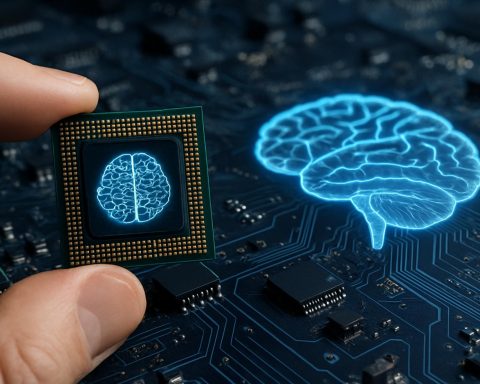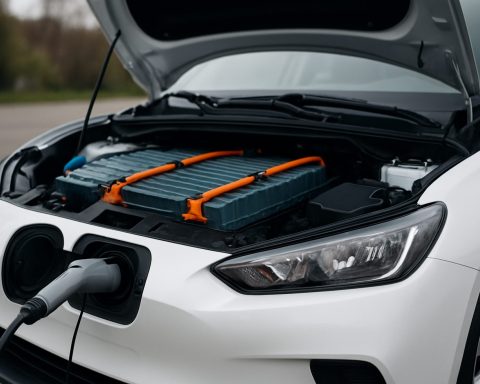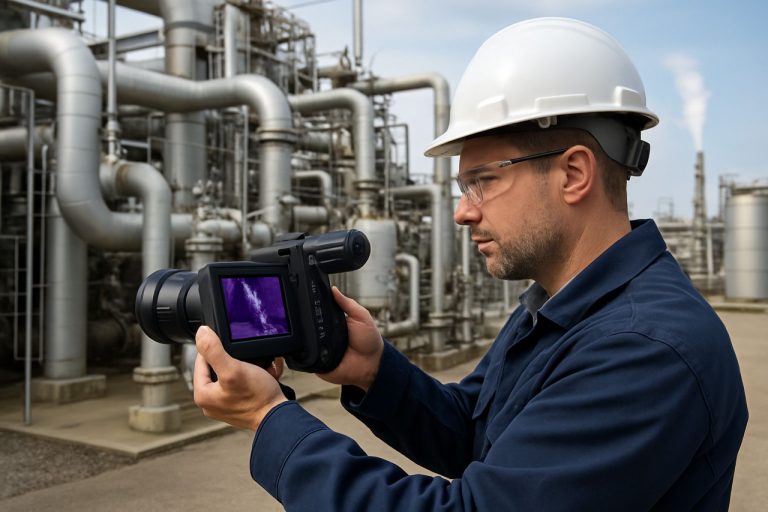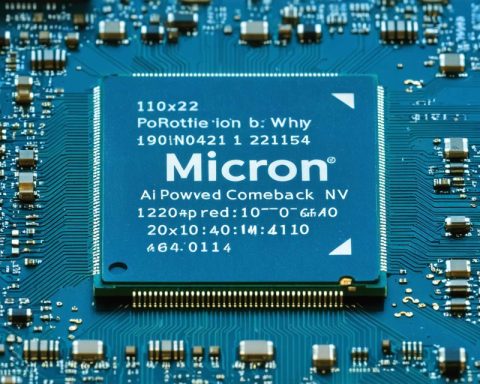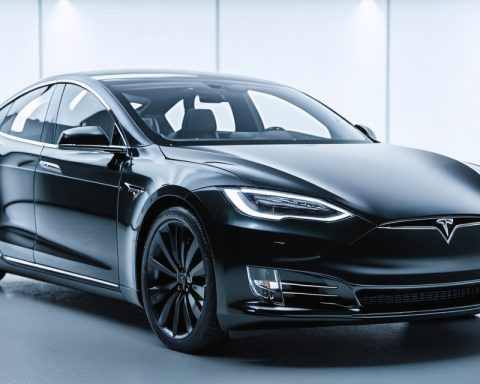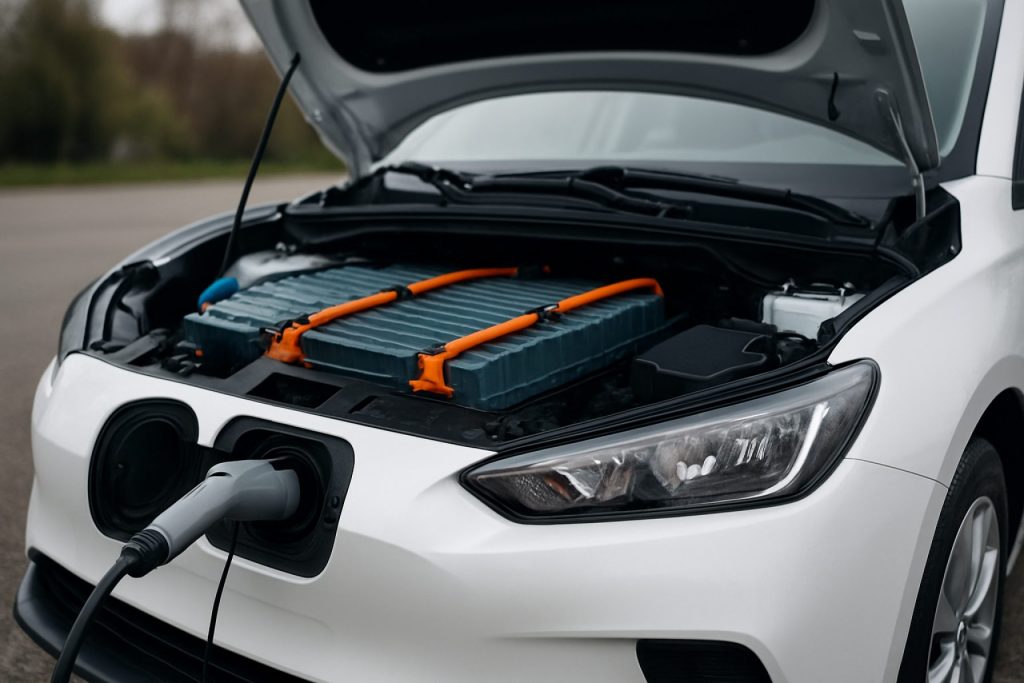Neuromorphic Computing Architecture Market Report 2025: In-Depth Analysis of Growth Drivers, Technology Innovations, and Global Opportunities. Explore Key Trends, Forecasts, and Strategic Insights for Industry Stakeholders.
- Executive Summary & Market Overview
- Key Technology Trends in Neuromorphic Computing Architecture
- Competitive Landscape and Leading Players
- Market Growth Forecasts (2025–2030): CAGR, Revenue, and Volume Analysis
- Regional Market Analysis: North America, Europe, Asia-Pacific, and Rest of World
- Future Outlook: Emerging Applications and Investment Hotspots
- Challenges, Risks, and Strategic Opportunities
- Sources & References
Executive Summary & Market Overview
Neuromorphic computing architecture refers to the design of hardware and systems that mimic the neural structure and functioning of the human brain, aiming to achieve highly efficient, parallel, and adaptive information processing. As of 2025, the neuromorphic computing market is experiencing accelerated growth, driven by the increasing demand for energy-efficient artificial intelligence (AI) solutions, edge computing, and real-time data processing in sectors such as automotive, healthcare, robotics, and IoT.
Unlike traditional von Neumann architectures, neuromorphic systems integrate memory and processing, enabling event-driven computation and significant reductions in power consumption. This makes them particularly attractive for applications requiring low latency and on-device intelligence, such as autonomous vehicles and smart sensors. According to Gartner, the global neuromorphic computing market is projected to reach a valuation of over $1.5 billion by 2025, with a compound annual growth rate (CAGR) exceeding 20% from 2022 to 2025.
Key industry players, including Intel Corporation (with its Loihi chip), IBM (TrueNorth), and Qualcomm, are investing heavily in research and development to commercialize neuromorphic hardware and software platforms. These efforts are complemented by academic and government initiatives, such as the European Union’s Human Brain Project, which fosters collaboration between neuroscience and computing disciplines.
Market adoption is currently strongest in research and pilot projects, but commercial deployments are expected to accelerate as neuromorphic chips demonstrate superior performance in pattern recognition, sensory data processing, and adaptive control tasks. The automotive sector, in particular, is leveraging neuromorphic architectures for advanced driver-assistance systems (ADAS) and autonomous navigation, while the healthcare industry explores their use in medical imaging and neural prosthetics.
Despite promising advancements, challenges remain, including the need for standardized development tools, scalable manufacturing processes, and robust software ecosystems. Nevertheless, the convergence of AI, edge computing, and neuromorphic hardware is poised to redefine the landscape of intelligent systems, positioning neuromorphic computing architecture as a transformative force in the next generation of computing technologies.
Key Technology Trends in Neuromorphic Computing Architecture
Neuromorphic computing architecture is rapidly evolving, driven by the need for energy-efficient, brain-inspired hardware capable of supporting next-generation artificial intelligence (AI) and edge computing applications. In 2025, several key technology trends are shaping the development and adoption of neuromorphic systems, reflecting both advances in hardware design and integration with emerging software frameworks.
- Spiking Neural Networks (SNNs) Integration: The adoption of SNNs, which mimic the event-driven communication of biological neurons, is accelerating. These networks enable ultra-low-power computation and real-time processing, making them ideal for edge devices and autonomous systems. Companies like Intel (with its Loihi chip) and research institutions such as European Bioinformatics Institute are leading efforts to optimize SNNs for practical deployment.
- Advanced Materials and 3D Architectures: The use of novel materials, such as memristors and phase-change memory, is enabling more compact and efficient neuromorphic chips. 3D stacking and heterogeneous integration are also gaining traction, allowing for higher density and improved connectivity, as highlighted in recent reports by International Data Corporation (IDC).
- Edge AI and On-Device Learning: Neuromorphic architectures are increasingly being tailored for edge AI, supporting on-device learning and inference with minimal energy consumption. This trend is particularly relevant for IoT, robotics, and wearable applications, where real-time responsiveness and battery life are critical. Arm and Qualcomm are investing in neuromorphic solutions for edge devices.
- Software Ecosystem Expansion: The development of open-source frameworks and programming tools is lowering barriers to entry for neuromorphic computing. Initiatives like Numenta’s HTM Studio and SynSense’s SDKs are enabling researchers and developers to experiment with neuromorphic algorithms and hardware.
- Hybrid Architectures: There is a growing trend toward hybrid systems that combine neuromorphic cores with traditional CPUs, GPUs, or FPGAs. This approach leverages the strengths of each architecture, enabling flexible and scalable solutions for complex AI workloads, as noted by Gartner.
These trends underscore a shift toward more biologically inspired, energy-efficient, and scalable computing paradigms, positioning neuromorphic architecture as a cornerstone of future AI and edge computing landscapes in 2025 and beyond.
Competitive Landscape and Leading Players
The competitive landscape of the neuromorphic computing architecture market in 2025 is characterized by a dynamic mix of established technology giants, specialized semiconductor firms, and innovative startups. The sector is witnessing intensified R&D investments, strategic partnerships, and a race to commercialize neuromorphic hardware and software solutions for applications spanning artificial intelligence (AI), robotics, edge computing, and autonomous systems.
Leading the market are companies such as Intel Corporation, which has made significant strides with its Loihi neuromorphic research chip. Intel’s ongoing collaborations with academic and industrial partners have positioned it at the forefront of scalable neuromorphic hardware development. Similarly, IBM continues to advance its TrueNorth architecture, focusing on ultra-low-power cognitive computing for edge devices and IoT applications.
European players are also prominent, with SynSense (formerly aiCTX) commercializing neuromorphic processors for real-time sensory processing, and GrAI Matter Labs developing brain-inspired chips for robotics and smart vision. These firms benefit from strong ties to the Human Brain Project, a major EU initiative driving neuromorphic research and ecosystem development.
Startups such as BrainChip Holdings are gaining traction with their Akida platform, which targets edge AI applications in automotive, security, and industrial automation. Meanwhile, Innatera Nanosystems is leveraging analog-mixed signal designs to deliver ultra-efficient neuromorphic processors for sensor fusion and always-on AI.
The competitive environment is further shaped by collaborations between hardware vendors and software ecosystem providers. For example, Qualcomm is integrating neuromorphic principles into its AI accelerators, while NVIDIA explores neuromorphic-inspired algorithms to complement its GPU-based AI platforms.
- Key competitive factors include power efficiency, scalability, programmability, and ecosystem support.
- Strategic alliances with research institutions and open-source communities are accelerating innovation cycles.
- Market entry barriers remain high due to the complexity of neuromorphic hardware design and the need for specialized software stacks.
As of 2025, the neuromorphic computing architecture market is poised for further consolidation, with leading players leveraging intellectual property, cross-industry partnerships, and first-mover advantages to capture emerging opportunities in AI-driven edge and autonomous systems.
Market Growth Forecasts (2025–2030): CAGR, Revenue, and Volume Analysis
The neuromorphic computing architecture market is poised for significant expansion between 2025 and 2030, driven by escalating demand for energy-efficient, brain-inspired computing solutions across sectors such as artificial intelligence (AI), robotics, and edge computing. According to projections by MarketsandMarkets, the global neuromorphic computing market is expected to register a compound annual growth rate (CAGR) of approximately 45% during this period, with revenues anticipated to surpass $8 billion by 2030, up from an estimated $1.2 billion in 2025.
This robust growth is underpinned by several factors:
- AI and Edge Computing Integration: The proliferation of AI-powered devices and the need for real-time data processing at the edge are accelerating the adoption of neuromorphic architectures, which offer superior parallel processing and ultra-low power consumption compared to traditional von Neumann architectures.
- Advancements in Hardware: Major industry players such as Intel Corporation and IBM are investing heavily in neuromorphic chip development, with new generations of hardware expected to reach commercial maturity by 2025–2027, further fueling market volume and revenue growth.
- Rising R&D Investments: Increased funding from both public and private sectors, including initiatives by the Defense Advanced Research Projects Agency (DARPA) and the European Commission, is accelerating innovation and commercialization of neuromorphic systems.
Volume analysis indicates that shipments of neuromorphic processors and systems are expected to grow from fewer than 100,000 units in 2025 to over 1 million units annually by 2030, as reported by International Data Corporation (IDC). This surge is attributed to expanding use cases in autonomous vehicles, smart sensors, and industrial automation, where neuromorphic architectures deliver tangible performance and efficiency gains.
In summary, the 2025–2030 period will likely witness exponential growth in both revenue and shipment volumes for neuromorphic computing architectures, positioning the technology as a cornerstone of next-generation intelligent systems.
Regional Market Analysis: North America, Europe, Asia-Pacific, and Rest of World
The global neuromorphic computing architecture market is witnessing differentiated growth trajectories across North America, Europe, Asia-Pacific, and the Rest of the World (RoW), shaped by regional investments, research ecosystems, and end-user adoption rates.
- North America: North America, led by the United States, remains at the forefront of neuromorphic computing architecture innovation. The region benefits from robust funding for AI and semiconductor research, a concentration of leading technology firms, and strong academic-industry collaboration. Major players such as Intel Corporation and IBM Corporation are actively developing neuromorphic chips and platforms. The U.S. government’s continued support for advanced computing initiatives, including DARPA’s programs, further accelerates market growth. In 2025, North America is expected to account for the largest revenue share, driven by early adoption in defense, autonomous vehicles, and data centers (MarketsandMarkets).
- Europe: Europe is emerging as a significant hub for neuromorphic research, propelled by public-private partnerships and EU-funded projects such as the Human Brain Project. Countries like Germany, the UK, and France are investing in neuromorphic hardware for robotics, industrial automation, and healthcare applications. Companies like SynSense (formerly aiCTX) and research institutions are collaborating to commercialize neuromorphic solutions. Regulatory emphasis on data privacy and energy efficiency is also fostering demand for low-power neuromorphic architectures (IDC).
- Asia-Pacific: The Asia-Pacific region is experiencing rapid growth, fueled by government initiatives in China, Japan, and South Korea to advance AI and semiconductor capabilities. China’s “New Generation Artificial Intelligence Development Plan” and investments by companies like Huawei Technologies are accelerating R&D in neuromorphic chips. Japan’s focus on robotics and smart manufacturing, along with South Korea’s semiconductor expertise, is driving regional adoption. The Asia-Pacific market is projected to register the highest CAGR through 2025, supported by expanding applications in consumer electronics and smart infrastructure (Gartner).
- Rest of World: In the Rest of the World, adoption remains nascent but is gradually increasing, particularly in Israel and select Middle Eastern countries with strong tech sectors. Latin America and Africa are primarily in the early research and pilot phases, with growth constrained by limited R&D infrastructure and investment. However, international collaborations and technology transfer initiatives are expected to stimulate gradual market entry (Allied Market Research).
Future Outlook: Emerging Applications and Investment Hotspots
Looking ahead to 2025, the future of neuromorphic computing architecture is defined by a convergence of technological innovation, expanding application domains, and intensifying investment activity. Neuromorphic systems, inspired by the structure and function of the human brain, are poised to address the limitations of traditional von Neumann architectures, particularly in terms of energy efficiency and real-time processing for AI workloads.
Emerging Applications
- Edge AI and IoT: Neuromorphic chips are increasingly being deployed in edge devices, enabling ultra-low-power, always-on sensing and inference. This is particularly relevant for smart sensors, autonomous vehicles, and wearable health monitors, where energy constraints and latency are critical. Companies like Intel (with its Loihi chip) and SynSense are leading pilot projects in these domains.
- Robotics and Autonomous Systems: The real-time learning and adaptability of neuromorphic hardware make it ideal for robotics, where dynamic environments require rapid, context-aware decision-making. Research collaborations, such as those between Imperial College London and industry partners, are accelerating the integration of neuromorphic processors in next-generation robots.
- Brain-Computer Interfaces (BCIs): Neuromorphic architectures are being explored for advanced BCIs, offering the potential for more natural and efficient communication between humans and machines. Startups and research labs are leveraging these chips for real-time neural signal processing, as highlighted by recent studies.
Investment Hotspots
- Venture Capital and Startups: The neuromorphic computing sector is witnessing a surge in venture capital, with startups like Innatera and SynSense securing multi-million dollar rounds to accelerate commercialization.
- Corporate R&D: Major semiconductor players, including Samsung and IBM, are ramping up R&D investments, focusing on scaling neuromorphic architectures for broader AI applications.
- Government and Academic Initiatives: Public funding and cross-disciplinary research programs, such as the EU’s Human Brain Project, are fostering innovation ecosystems and supporting the translation of neuromorphic research into commercial products.
By 2025, the neuromorphic computing landscape is expected to mature, with pilot deployments transitioning to commercial-scale applications, particularly in edge AI, robotics, and healthcare. The sector’s growth will be underpinned by continued investment, cross-sector partnerships, and advances in materials and design methodologies.
Challenges, Risks, and Strategic Opportunities
Neuromorphic computing architecture, inspired by the structure and function of the human brain, is poised to revolutionize artificial intelligence and edge computing. However, as the market moves toward 2025, several challenges and risks must be addressed to unlock its full potential, while strategic opportunities are emerging for innovators and investors.
One of the primary challenges is the lack of standardized hardware and software platforms. The neuromorphic ecosystem is fragmented, with leading players such as Intel (Loihi), IBM (TrueNorth), and SynSense developing proprietary architectures. This fragmentation hinders interoperability and slows the adoption of neuromorphic solutions in mainstream applications. Additionally, the absence of mature development tools and programming frameworks complicates the integration of neuromorphic chips into existing AI workflows, increasing the barrier to entry for developers and enterprises.
Another significant risk is the uncertainty surrounding scalability and commercial viability. While neuromorphic chips demonstrate impressive energy efficiency and low-latency processing in laboratory settings, scaling these architectures for mass production and deployment remains a technical and economic challenge. Manufacturing processes for neuromorphic hardware are not yet optimized for high-volume, cost-effective production, which could delay widespread adoption and limit market growth through 2025 IDC.
Security and reliability also pose risks. Neuromorphic systems, by virtue of their novel architectures, may introduce new attack surfaces and vulnerabilities that are not well understood. Ensuring robust security protocols and fault tolerance is critical, especially for applications in autonomous vehicles, defense, and healthcare, where system failures can have severe consequences Gartner.
Despite these challenges, strategic opportunities abound. The growing demand for edge AI and ultra-low-power computing in IoT devices, robotics, and smart sensors creates a fertile ground for neuromorphic solutions. Strategic partnerships between hardware vendors, research institutions, and software developers can accelerate the development of standardized platforms and tools. Furthermore, governments and industry consortia are increasing investments in neuromorphic R&D, recognizing its potential to drive next-generation AI capabilities European Commission.
In summary, while neuromorphic computing architecture faces notable hurdles in 2025, proactive strategies focused on standardization, ecosystem development, and targeted investment can transform these risks into significant market opportunities.
Sources & References
- IBM
- Qualcomm
- Human Brain Project
- European Bioinformatics Institute
- International Data Corporation (IDC)
- Arm
- Numenta
- SynSense
- BrainChip Holdings
- NVIDIA
- MarketsandMarkets
- Defense Advanced Research Projects Agency (DARPA)
- European Commission
- Huawei Technologies
- Allied Market Research
- Imperial College London
- recent studies
- Innatera
- European Commission


